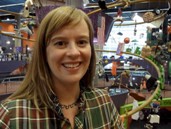
Tim Mikulski
Your Personal Mission Statement: Who Are You? Why Are You Here?
Posted by Jun 07, 2012

Tim Mikulski
Earlier today at the Emerging Leaders Preconference, Rosetta Thurman held the full attention of her audience as she walked them through an exercise to help participants develop their own personal mission statement. This paragraph, page, or even piece of artwork reminds you who you are and helps you make decisions related to how you spend your time in your life. It's a concise statement that reminds you of what's important. Thurman tapes hers to her computer screen for those moments when she needs to be reminded to walk away from it.
From the beginning of the session, she asked the ballroom full of emerging leaders to ask themselves "Who are you?" and "Why are you here?" as a guide in both your professional and personal lives. She also challenged the audience to get away from the paradigm of the "work/life balance" and move closer toward being whole—just include everything that you care about in your life in some way.
Then, taking a lead from author Stewart Friedman, she asked the crowd to think about the four domains of one's life and determine how much time you spend on them: work, home, community, and your private self.
All of the domains are determined by the individual so work can only include the time you spend at your desk at work or it could include volunteer time, board member time, etc. Home encompasses time spent with family, your spouse/partner, children, chores, shopping, cooking, etc. Community includes whenever you are out "doing good" in your neighborhood. Private self is self-explanatory—taking the time to sleep, exercise, improve your mental health, or getting that mani/pedi as Thurman said.
She asked attendees to then assign a percentage (out of 100) for time spent on each of those four domains. The room fell silent for several minutes.
Read More















